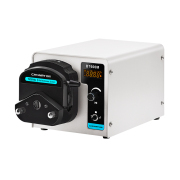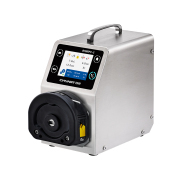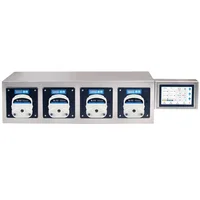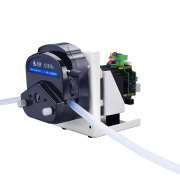Chonry Peristaltic Pump

Pressure condition of peristaltic pump
Peristaltic pump pressure reasons: peristaltic pump is to rely on the roller extrusion hose to transport liquid, to prevent liquid backflow, must always maintain sealing, sealing will produce a certain amount of pressure. So what does stress have to do with it? It is related to the tightness of the pressure tube. The looser the pressure tube is, the smaller the pressure is, the longer the hose life is, and there is no pressure when the pressure is not sealed. On the contrary, the tighter the pressure tube, the greater the pressure, tight to a certain extent when the hose will produce relatively large pressure tube fatigue wear, hose life will be short.
The pressure of the peristaltic pump is determined by the pressure tube gap, which is why the soft tube wall thickness applicable to the same type of peristaltic pump is the same. The size of inner diameter and outer diameter is not the key, but the same pump head can be used as long as the wall thickness is the same (the roller is long enough). But the problem comes, if the hose with the same wall thickness of 2.4mm, there must be some error between the manufacturer and the manufacturer. Even if the hose is produced by the same manufacturer, there will also be an error of ±0.1mm. For the pressure of the peristaltic pump, the error of 0.1mm is enough to cause a large pressure difference. That is to say, in the case of a certain pressure tube gap, different hoses will have different pressure, and accordingly, the hose life will be different.
In practical application, excellent peristaltic pump design will have the function of pressure regulation, to adapt to the size difference between different manufacturers, domestic, imported pump pipe. This feature is critical for pumps with a wall thickness of less than 2.4mm, where a small error can result in large differential pressure. Another application of this function is that it can be used in situations requiring different pressure, which can be achieved by adjusting the pressure. Of course, the pressure range here should be within the range that the peristaltic pump can bear.
Applicable wall thickness of 2.4mm and below peristaltic pump pressure range is about 0-0.25mpa; Applicable wall thickness of 4.8mm and above peristaltic pump pressure range is about 0-0.6mpa. The main factor affecting the pressure of the peristaltic pump is the wall thickness of the hose. The thicker the wall thickness is, the greater the bearing capacity of the hose is, and the greater the pressure can be achieved.



0users like this.







